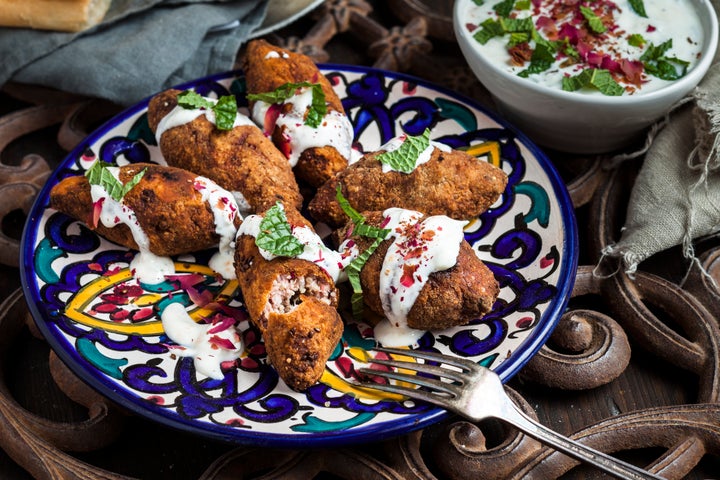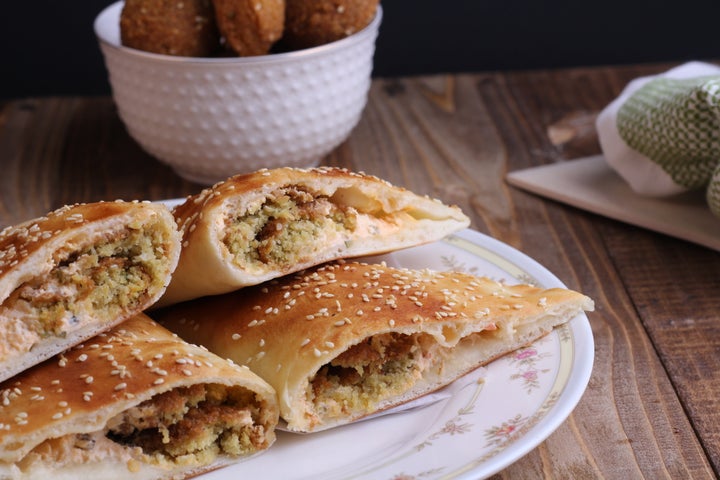
I often tell people that my choice to go vegan was by accident. When I started, I cut out a number of things to focus on weight loss. It’s been just under a year now and I’m still going strong (with the exception of the odd dessert — but when in New York City, right?). I also wanted to do whatever I could to be kind to the earth, and I don’t believe that animals can be treated entirely ethically when at the hands of capitalism and mass production.
Growing up, however, these things were an afterthought. While my family cares deeply for the environment, veganism wasn’t something we ever talked about. In fact, I didn’t know what being vegan was until I got to Grade 7, and even then it was “something that white hipsters did.”
I was born and raised in Canada, but my parents always made sure my brother and I understood that our roots were firmly planted in the Middle East— a home we had only visited a handful of times. Like many diasporic children, we exist within two worlds, living in the familiarity of our birthplace while yearning for (and romanticizing) the countries we call “back home.”
In my adolescence, my heart belonged to the sepia streets of Lebanon and Jordan, to the fig trees that lined my grandparents’ homes, to the warm twilights that melted into jasmine-scented nights, illuminated only by the cigarettes of family friends. I can’t seem to shake from my memory the scents of marinated chicken stacked high on a spit, sizzling cheese-filled fried pastries, and meat pies toasting.
It’s a peculiar thing to love and feel connected to places where you “come from” but aren’t really “from.” Growing up, I often thought about what made me Arab even though “Canadian” was printed in my passport. Identity is a complex thing, especially for a kid. It’s hard to understand why you never really feel like you belong anywhere — the “Canadian” in the country of your parents, and the “other” in your home country.

Food has always been the one thing which tied me to my roots — my family’s techniques have always relied heavily on hand making everything. Kubbi, for example, is like a hollowed-out meatball stuffed with more meat. When I was little, my mother would teach me how to shape the raw mixture with Play-Doh for practice. My hands moving in the same ways as my ancestors’ to create the same dishes that they did connects me so deeply to the food of my culture.
In my childhood home, I remember sitting parallel to my mother at the table as she chopped parsley, rolled grape leaves and stuffed zucchini.
Before school, my mornings were filled with the scent of thyme, sesame seeds and olive oil baking atop homemade bread in the oven as Umm Kulthum’s velvet voice swirled through the air. After school, I stuffed my face with dumplings filled with beef, pine nuts and spices swimming in a stew of plain yogurt and rice. But evenings were my favourite — my mother made pancake-like desserts soaked in simple syrup and speckled with crushed pistachios, and served them with clotted cream and rose-water blends.

In the summer, we would spend our weekends in our garage as my aunts, uncles and cousins would gather for fatyr (dough filled with either spinach and lemon, or potato and ground beef mixtures) cooked atop the saj (a Lebanese domed grill) that my father dragged across the world years ago. As I grew up, I learned how to measure spices in the palm of my hand, roll grape leaves tightly (but not too tightly) and knead doughs with love.
For a little while, I didn’t really notice how this new vegan lifestyle was going to play into my cultural identity. Being vegan in Canada isn’t really that hard, my local grocery store is always stocked with a variety of plant-based milks, faux chicken strips and meat replacements. It took me a few months of making “Western” vegan food to realise that something was missing.
Western veganism has made it so that Western dishes are accessible, but it seems I was on my own if I was interested in getting traditional food. People like me who are trying to figure out how to navigate their non-Western cultures and lifestyles are left out.
“This lack of accessibility stems from how veganism has been commercialized and colonized.”
I really had no idea how many of my family’s traditional dishes I would have to give up, and while a few Lebanese and Jordanian dishes are already vegan-friendly, it isn’t the same.
That clotted cream I mentioned before? Now I can only dream about it at night. And don’t even get me started on kubbi — I would love to dunk those perfect little meatballs into lentil soup like they were Oreos (which, consequently, I also can’t have). Craving these things always makes me feel like a “fake” or “bad” vegan. But these are the flavours of my home, my childhood, my family — I really can’t help it.

This lack of accessibility stems from how veganism has been commercialized and colonized. The origin of veganism is tied to the complex history of Eastern religious traditions — like Buddhism and Jainism, and later Hinduism — and the practice of non-violence toward animals. But by the time the practice made its way West, it was reduced to a trend, with less emphasis on the original ethical philosophies and intentions of countering commercialism and mass-production.
Mainstream veganism is now largely defined by white culture in the West. As a result, I’ve found that when interacting with non-PoC vegans that I can’t just be “vegan” — I’m always asked if it’s for religious or cultural reasons, insinuating that my choice must be rooted in where I come from rather than my own decision.
So, what’s a girl to do? Over the past few months, I’ve been adapting my family’s recipes as best as I can to fit my dietary restrictions (with the help of my patient mother). As cliché as it may sound, it’s felt like a metaphor for the way that I’ve blended the two parts of myself — the Western and Eastern vegan.
Most recently, I adapted that meat dumpling and yogurt stew dish from my childhood, shishbarak. It has has been my biggest challenge so far — but also the most successful. It’s pretty safe to say that I’m beyond proud of it.
And while I wish I could say I’ve been able to recreate everything perfectly (looking at you, knafeh), I can’t. But this adventure has allowed me to dive deeper into my culture than ever before, while looking at it through a new lens.
Even though it’s been challenging (and I don’t care to admit this), I do get a little emotional when my kitchen smells of my childhood. That’s when I know I’ve done something right.
This article first appeared on HuffPost Canada Personal
Have a compelling personal story you want to tell? Find out what we’re looking for here, and pitch us on ukpersonal@huffpost.com